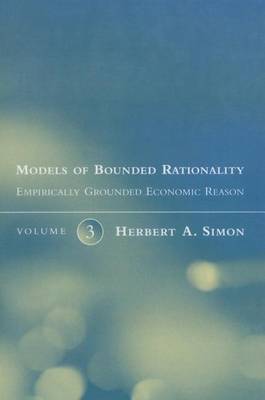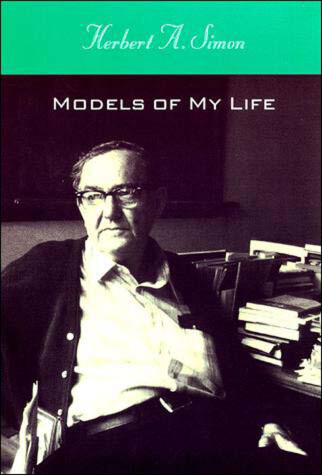MIT Press
4 total works
Throughout Herbert Simon's wide-ranging career-in public administration, business administration, economics, cognitive psychology, philosophy, artificial intelligence, and computer science-his central aim has been to explain the nature of the thought processes that people use in making decisions.
The third volume of Simon's collected papers continues this theme, bringing together work on this and other economics-related topics that have occupied his attention in the 1980s and 1990s: how to represent causal ordering formally in dynamic systems, the implications for society of new electronic information systems, employee and managerial motivation in the business firm (specifically the implications for economics of the propensity of human beings to identify with the goals of organizations), and the state of economics itself.
Offering alternative models based on such concepts as satisficing (acceptance of viable choices that may not be the undiscoverable optimum) and bounded rationality (the limited extent to which rational calculation can direct human behavior), Simon shows concretely why more empirical research based on experiments and direct observation, rather than just statistical analysis of economic aggregates, is needed.
The twenty-seven articles, in five sections, each with an introduction by the author, examine the modeling of economic systems, technological change: information technology, motivation and the theory of the firm, and behavioral economics and bounded rationality.
A brilliant polymath in an age of increasing specialization, Simon is one...
Read moreA brilliant polymath in an age of increasing specialization, Simon is one of those rare scholars whose work defines fields of inquiry. Crossing disciplinary lines in half a dozen fields, Simon's story encompasses an explosion in the information sciences, the transformation of psychology by the information-processing paradigm, and the use of computer simulation for modeling the behavior of highly complex systems.
Simon's theory of bounded rationality led to a Nobel Prize in economics, and his work on building machines that think—based on the notion that human intelligence is the rule-governed manipulation of symbols—laid conceptual foundations for the new cognitive science. Subsequently, contrasting metaphors of the maze (Simon's view) and of the mind (neural nets) have dominated the artificial intelligence debate.
There is also a warm account of his successful marriage and of an unconsummated love affair, letters to his children, columns, a short story, and political and personal intrigue in academe.
Essays on the Structure of Social Science Models
by Albert Ando, Franklin M. Fisher, and Herbert A. Simon
A set of related papers dealing with the meaning of causality in simulataneous dynamic equation systems. Investigation of the systems which only approximately satisfy the conditions enabling the definition of causality, leads to a set of limiting theorems concerning the dynamic behavior of such systems over time, and estimation...
Read moreA set of related papers dealing with the meaning of causality in simulataneous dynamic equation systems. Investigation of the systems which only approximately satisfy the conditions enabling the definition of causality, leads to a set of limiting theorems concerning the dynamic behavior of such systems over time, and estimation procedures for the parameters of such systems. Implications of these theorems for some well-known propositions in economics and other social sciences are considered.



